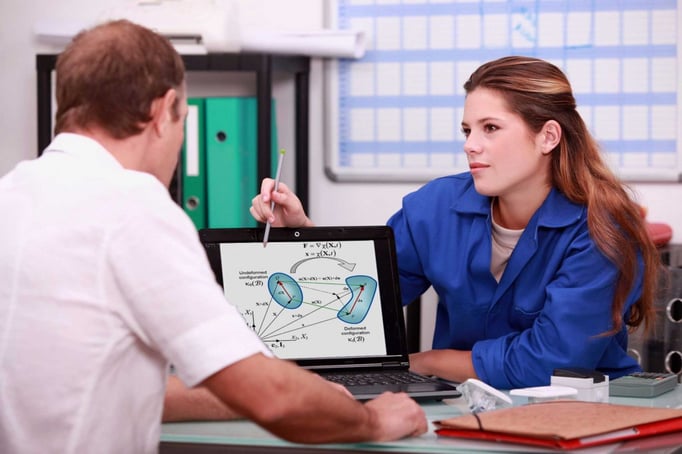This post was written by Anton Netcheav, a research computer scientist at the U.S. Army Engineer Research and Development Center.
I moved with my family to America from Russia in the early 2000s. Upon entering college in 2003, I had a fairly good idea of what I wanted from my education. After taking classes at Louisiana State University and the University of Southern Mississippi (USM), I graduated with a bachelor's degree in computer engineering technology from USM. I applied to several graduate programs but chose USM because I was offered a graduate assistant position, which allowed me to be close to my family.
In graduate school, I became engaged in research, which remains very interesting to me. I work for a very active research lab and have had the chance to work on exciting projects, including computational projects in image processing in areas of image analysis using visual clues and texture in Markov random fields and edge detection. Instrumentation projects included robotics design with obstacle avoidance algorithm, detection of hydrogen in helium flow, level detection in cryogenic tank, and continuous analysis of photocatalytic activity in thin-films. After completing my master's degree in engineering technology, I began studies for my doctorate in computational science with an emphasis in computer science. Since starting this study, my experiences have allowed me to see a project through hardware development, software design, and system implementation.
ISA has benefited my career in many ways. My first paper and presentation with ISA was in my senior year at the 2009 54th IIS, in Pensacola, Fla. Since that time, I have presented at least one paper per year at an ISA venue, which has developed my presentation skills and allowed me to network with professionals in my field from all around the world. I have been able to hone my technical skills by writing and reviewing technical papers, which has given me unexpected recognition in the industry
At USM, I am the lead graduate student on many research projects, which include topics such as rocket engine testing instrumentation, in-situ micron measurement of coatings, nanocaged trimeallic micron particle development, photocatalytic process characterization, and image analysis. ISA has provided a gateway to present my work and meet colleagues in the field. The networking opportunities at the symposia and technical conferences have provided valuable contacts in the industry. These opportunities are often overlooked by many students and should be encouraged for all future professionals in automation.
Volunteerism at ISA is very valuable for career growth. I try to volunteer at every symposium: help organize, provide program content, or present technical topics relative to my area of expertise. This is a great way to meet people and learn from the interesting sessions. I have moderated sessions and assisted with operations, logistics, and other tasks as needed. In recent years, I have presented papers on selected research projects from our research group at the IIS Symposia and ISA Automation Week. The presentation process helped me significantly improve my skills in technical speaking, and I received invaluable feedback from many mentors in instrumentation and automation. Participating in ISA events also allows me to network with industry contacts who face the same problems as I do in the industry. This approach has yielded solutions or steered me in the right direction on many occasions.
My path is a testament to how getting involved with ISA can help you craft your own path to being an innovator. I would recommend that any young professional in the field of instrumentation join ISA, attend one of the many symposia, and purchase ISA publications and take advantage of ISA education and training. These professional opportunities not only help in networking within the industry but also provide a valuable opportunity to see what cutting edge technologies are right at your fingertips. I have seen many new advances in instrumentation provided by ISA. Now I, too, provide inspiration to other young instrumentation professionals and help them solve difficult problems.
About the Author
 Anton Netcheav is a research computer scientist at the U.S. Army Engineer Research and Development Center. Prior to that, he was a research assistant at the University of Southern Mississippi. He holds a bachelor's degree in computer engineering technology from USM and a master's degree in engineering technology. His contributions to ISA publications include instrumentation projects, robotics design with obstacle avoidance algorithm, and detection of hydrogen in helium flow. Netcheav enjoys soccer, skiing, mountain biking, and other outdoor – even extreme – sports.
Anton Netcheav is a research computer scientist at the U.S. Army Engineer Research and Development Center. Prior to that, he was a research assistant at the University of Southern Mississippi. He holds a bachelor's degree in computer engineering technology from USM and a master's degree in engineering technology. His contributions to ISA publications include instrumentation projects, robotics design with obstacle avoidance algorithm, and detection of hydrogen in helium flow. Netcheav enjoys soccer, skiing, mountain biking, and other outdoor – even extreme – sports.
A version of this article also was published at InTech magazine.




